In under 30 minutes you could be indulging in the widely popular Italian chocolate hazelnut spread known as gianduja. Its smooth texture and delicious flavor will captivate any chocolate lover, so get ready to make this easy, 5-ingredient gianduja recipe.
For other delicious traditional chocolate treats, try my brigadeiros or classic hot fudge sauce.
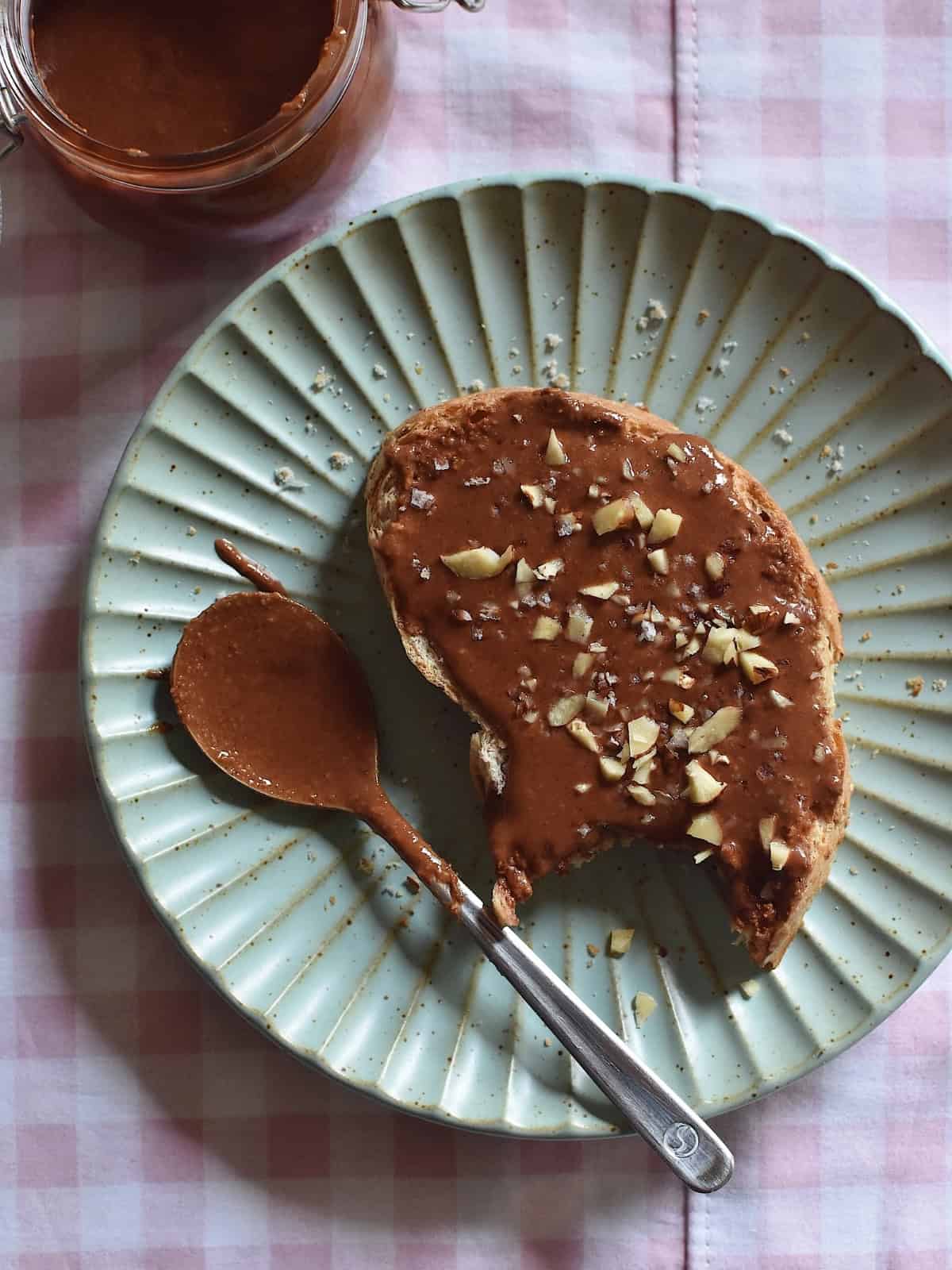
Jump to:
🎓 What is Gianduja? (Ingredients)
Gianduja is an Italian hazelnut and chocolate confection invented in Italy and pronounced john-DOO-yah, though it was originally spelled gianduia in Italian.
This chocolate hazelnut paste is a luxurious marriage of velvety smooth chocolate, rich, creamy hazelnut, and sugar. Traditional gianduja makers prioritize using high-quality ingredients, including a premium variety of hazelnuts that grow in abundance in the pristine Langhe Hills.
Legally, products labeled 'gianduja' should consist of at least 20% hazelnuts and 32% cacao solids. However, some gianduja manufacturers include up to 55% hazelnuts to make this coveted paste, deepening the nutty creaminess and making it less sweet.
Gianduja’s tastes sophisticatedly sweet, delightfully creamy, nutty, and fudgey all in one. Its balanced sweetness and rich flavor is ideal for spreading on toast, stuffing pastries, or simply eating by the spoonful; you can even nuke it for a few seconds and then drizzle it on ice cream.
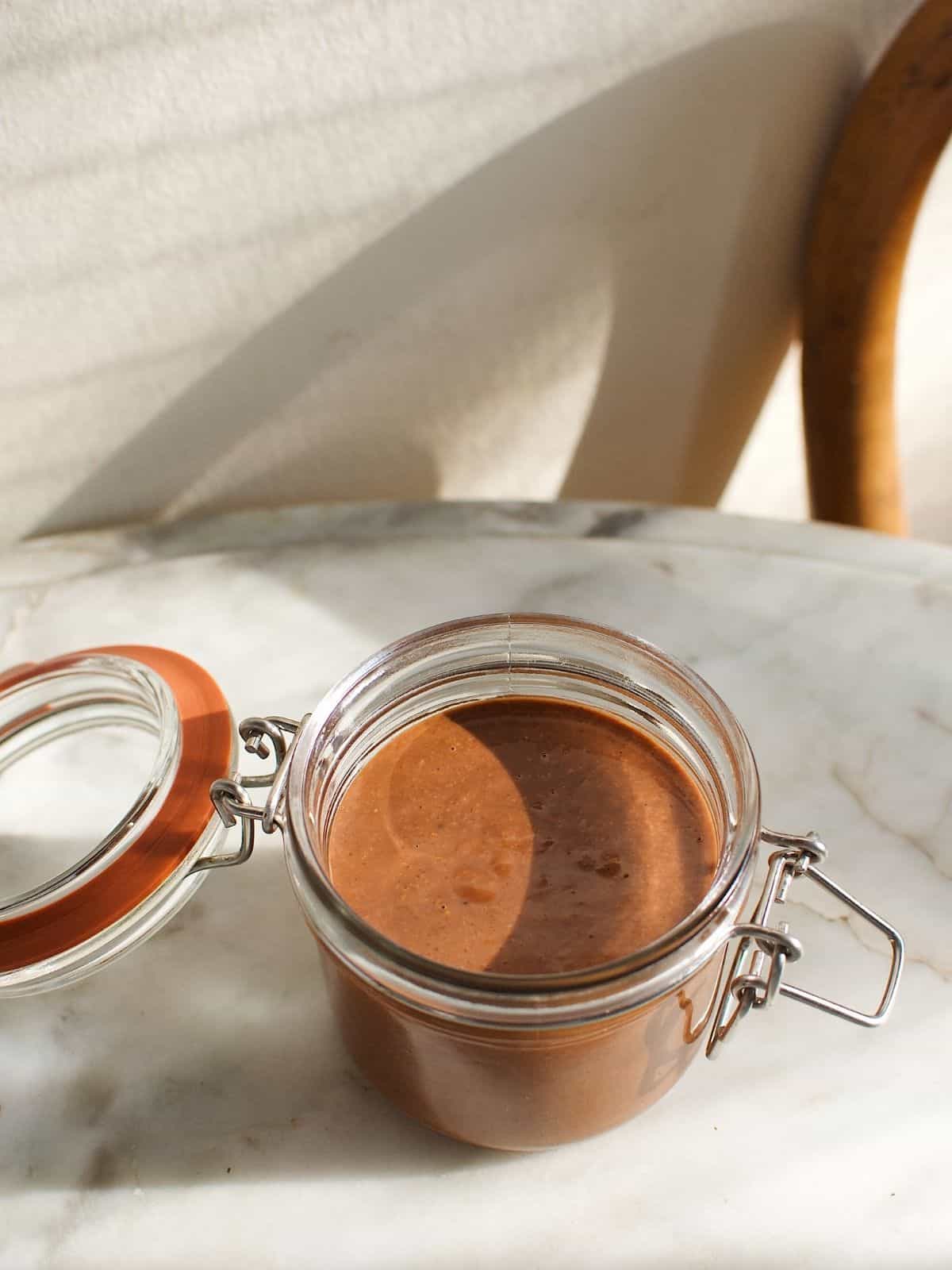
✔️ Is Gianduja the Same as Nutella?
Gianduja and nutella are both chocolate-hazelnut creations with shared roots, but they differ significantly in composition, taste, and history.
It was only post-WWII cacao scarcity that led Pietro Ferrero to invent Nutella in the 1940's, adapting his recipe from the traditional gianduia recipe of 70% hazelnuts and 30% chocolate. Initially, Ferrero made solid loaves of his conconction, with just a trace of chocolate.
But eventually these small delicacies evolved into a more affordable, spreadable version named Supercrema Gianduja, which was later renamed Nutella in 1964. Nutella today is known for its sweet taste and creamy texture, still containing a relatively small amount of hazelnuts (13%) and cacao (negligible), both sourced globally.
In contrast, gianduja is a denser, more traditional spread with a richer flavor, using at least 20% Italian hazelnuts and 32% cacao liquor, made by grinding roasted cacao beans and hazelnuts with sugar and cocoa butter (and sometimes milk).
🌰 Ingredients
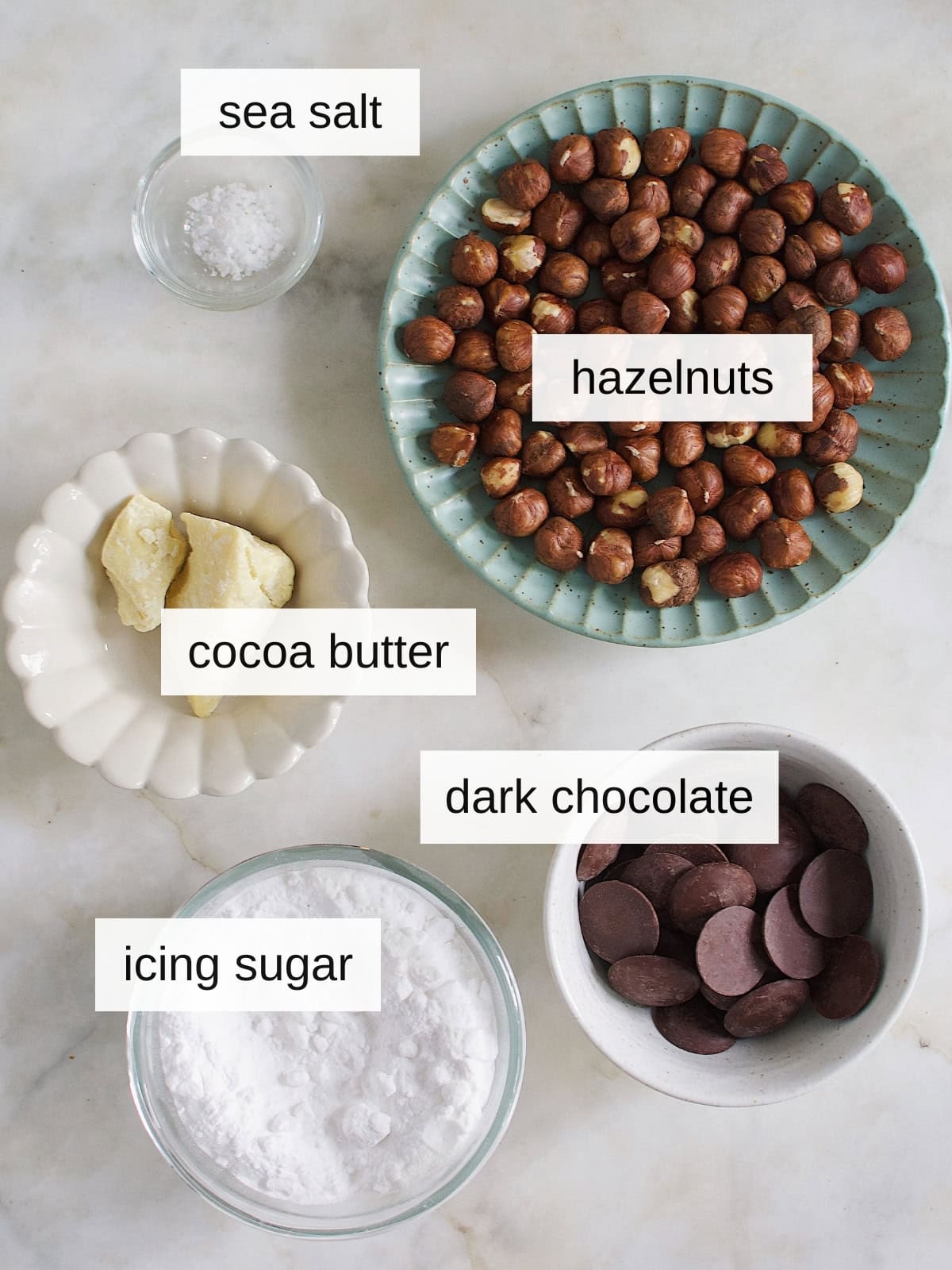
Raw Hazelnuts: these are the key ingredient to making great homemade gianduja spread. Whatever you do, don't buy oil-roasted hazelnuts!
Chocolate: you can use any type of chocolate you enjoy, but a traditional gianduja recipe is made with dark chocolate, while I tend to prefer the smooth richness of milk chocolate. You cn even use white chocolate to make a smooth white gianduja spread.
Cocoa Butter: while you could theoretically use hazelnut oil or coconut oil in place of cocoa butter, this would make for a thinner spread. The most authentic gianduia recipe would be made using aromatic food-grade cocoa butter melted with the chocolate.
Icing Sugar: while you could also grind granulated sugar yourself, it's easiest to make this with powdered icing sugar that's free from corn starch or other additives. Just be sure to sift it before adding!
Sea Salt: this is techinically optional, but adds a delightful flavor contrast.
See recipe card for exact measurements and quantities.
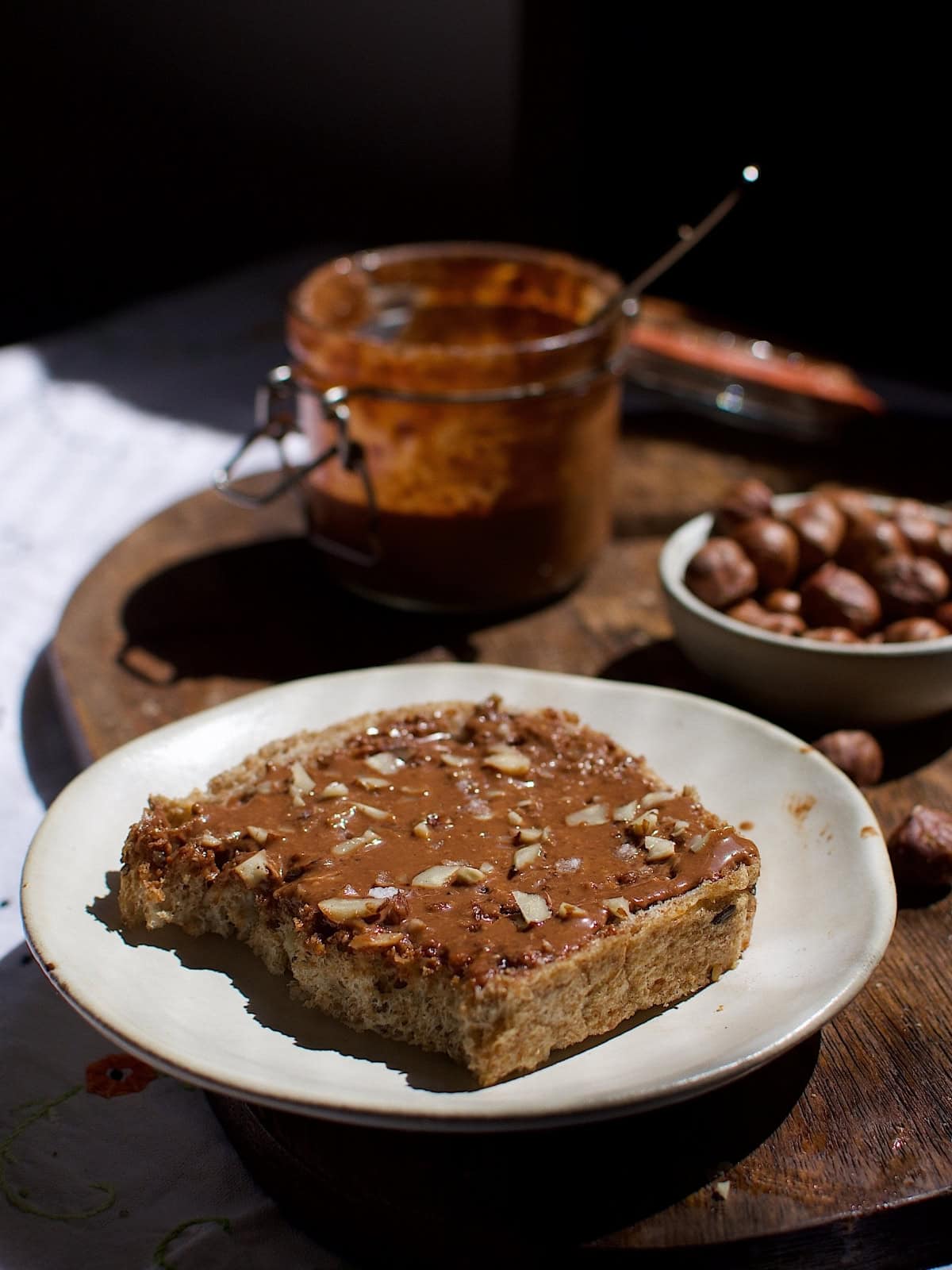
🍫 Substitutes and Variations
While in Italy there are legal specifications as to what can be called gianduia, when you make gianduja spread at home, you can make all kinds of swaps to add flair to your usual recipe or better cater it to your needs.
Vegan Chocolate Spread: to make vegan gianduja, be sure to use organic dark chocolate rather than a milk chocolate, and organic-certified sugar.
Gianduja without Hazelnuts: you can use almond butter or really any other nut butter in place of making your own hazelnut paste, but I highly recommend working from raw nuts.
Gianduja without Dark Chocolate: you can use the same amount of any other type of chocolate, such as dark milk, milk, or white, depending on your dietary needs or flavor preferences.
Gianduja without Sugar: I haven't yet tried it, but you could use any type of powdered sweetener in place of the sugar added near the end.
- Almond Gianduja - use raw blanched almonds to make your spread.
- Pistachio Gianduja - use the same weight of unroasted, shelled & peeled pistachios to create a different flavor profile and color.
- White Gianduja - just swap out the traditional dark or milk chocolate for white chocolate.
- Vanilla Gianduja - use white or blonde chocolate in place of dark chocolate, and then mix in up to ¼ teaspoon of vanilla powder at the end of the production process to create a smoother, creamier chocolate spread.
- Spiced Gianduja - incorporate a small amount of cinnamon and clove for a unique twist.
🥣 How to Make Gianduja at Home: Step-by-Step
Step 1) Prepare the Hazelnuts. If using raw nuts, begin by toasting your hazelnuts to enhance their flavor. Preheat your oven to 350°F (175°C) and spread the hazelnuts in a single layer on a baking sheet.
Toast them in the oven for about 10-12 minutes, or until they're golden brown and fragrant. Once toasted, wrap the hazelnuts in a kitchen towel and rub them to remove as much of the skin as possible. This will reduce the bitterness (image 1).

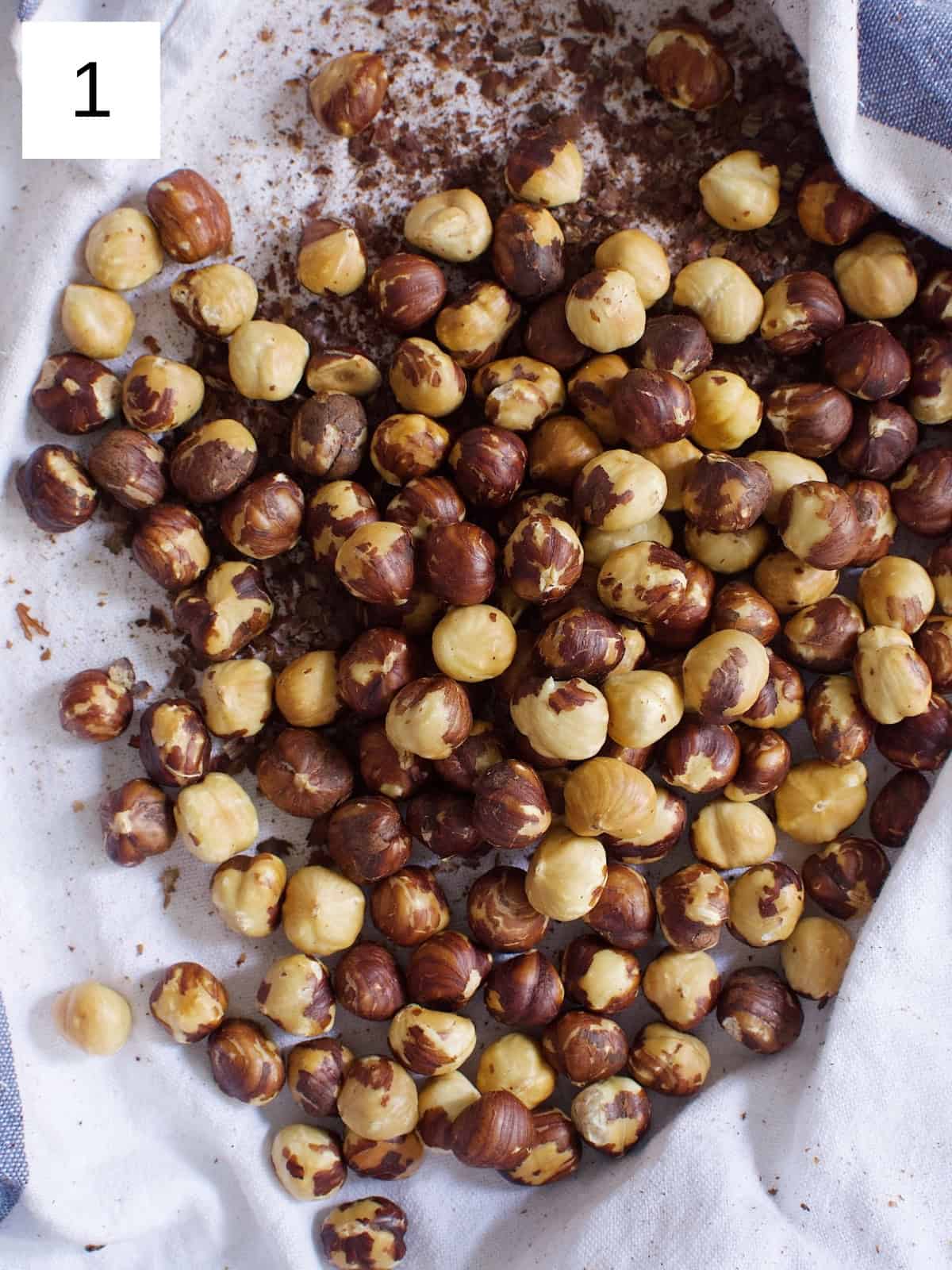
Step 2) Grind the Hazelnuts. When the peeled hazelnuts have cooled, transfer them to a food processor (image 2) and grind them to a fine paste (images 3, 4, & 5). This may take several minutes, and you should scrape down the sides of the food processor periodically to ensure an even consistency. You're aiming for a smooth, buttery texture, similar to that of peanut butter.
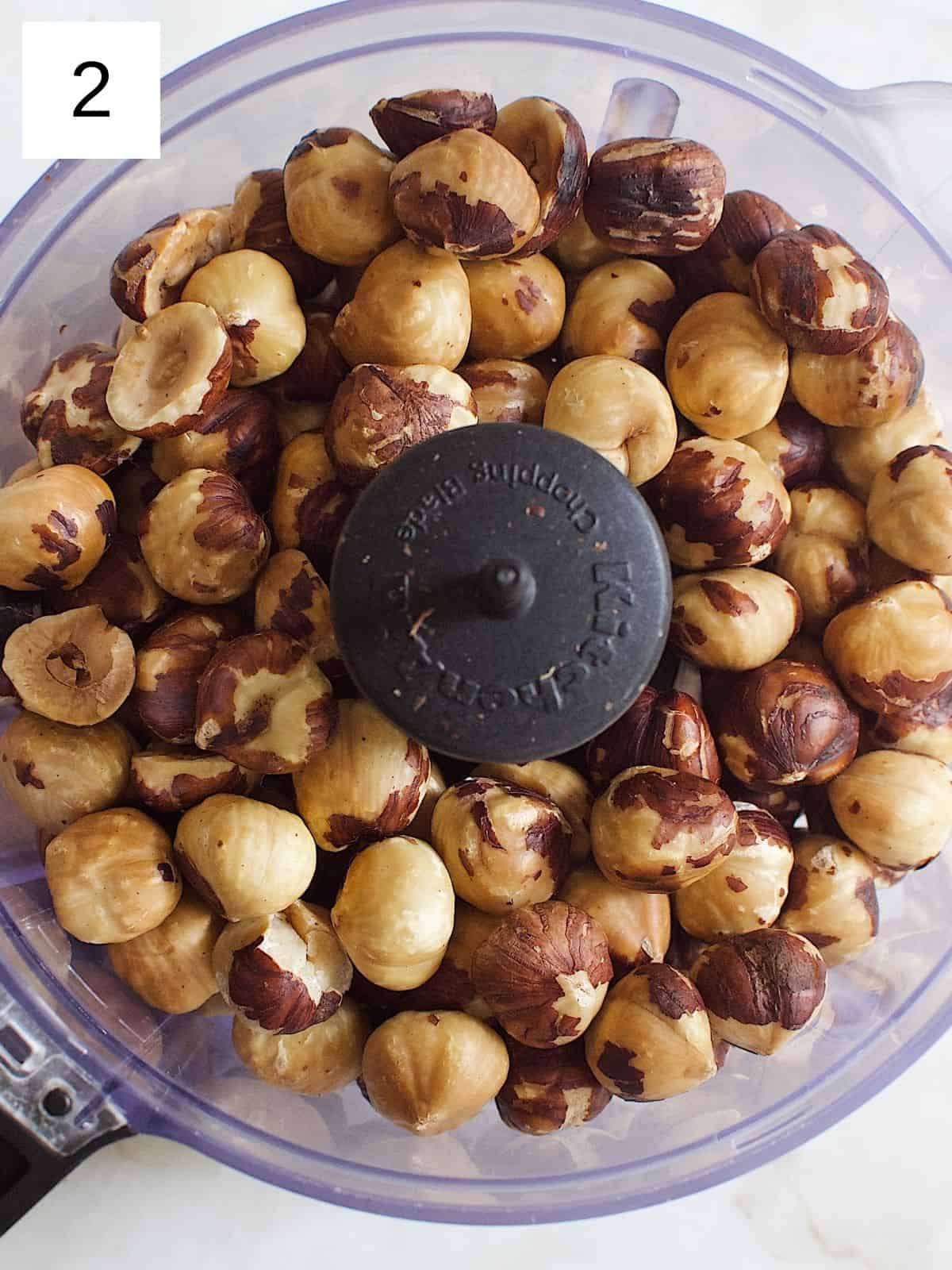
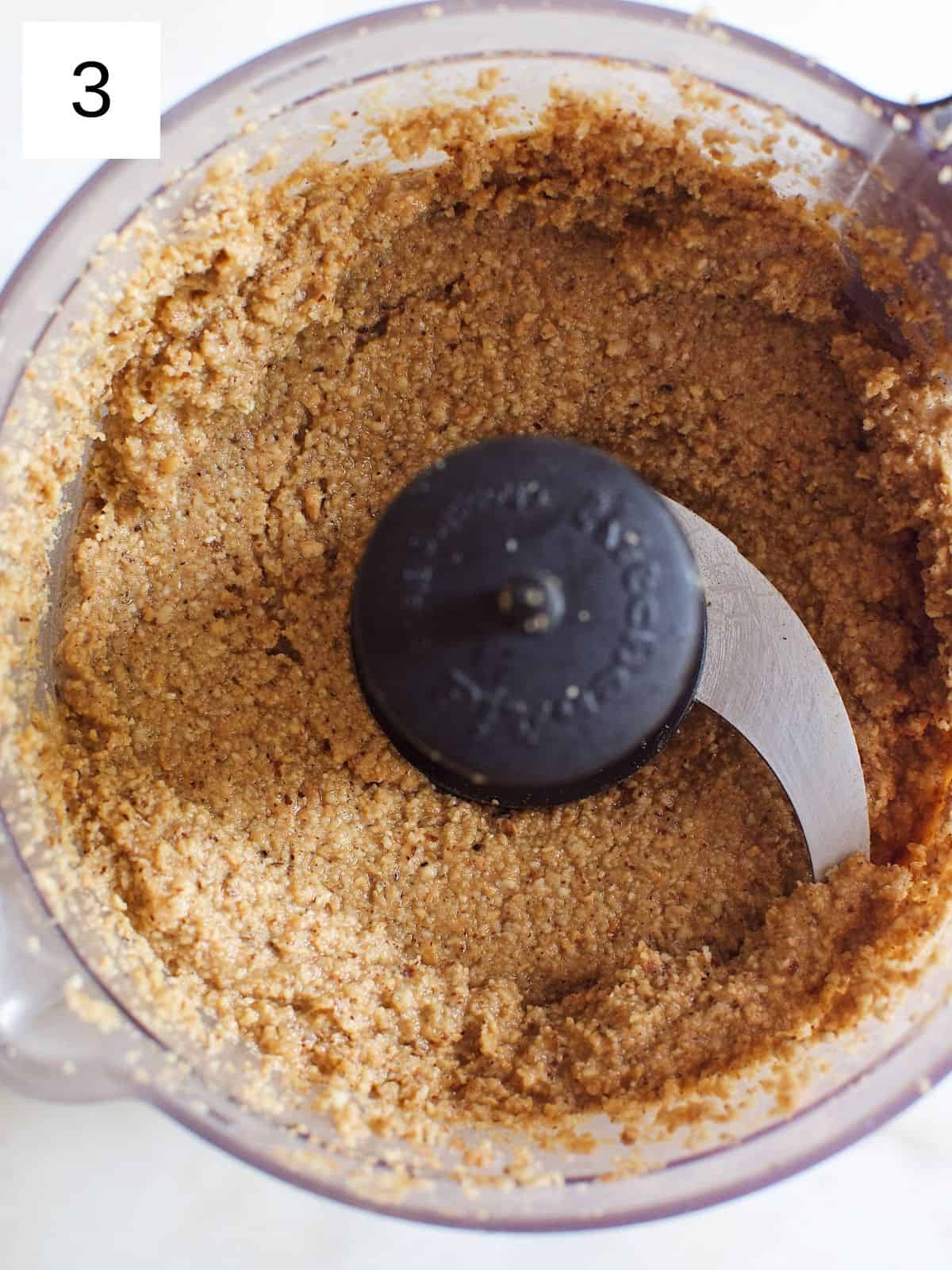
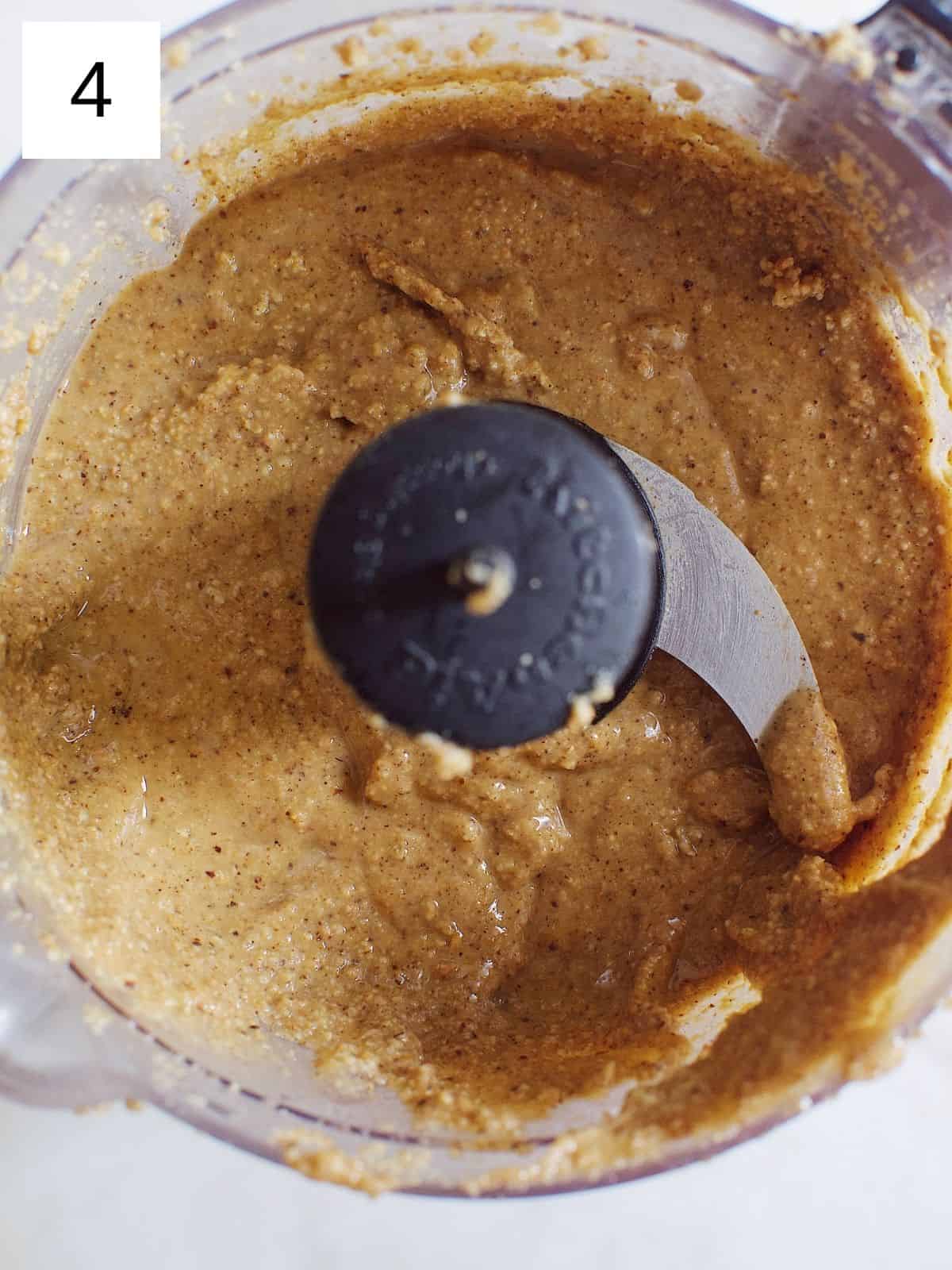
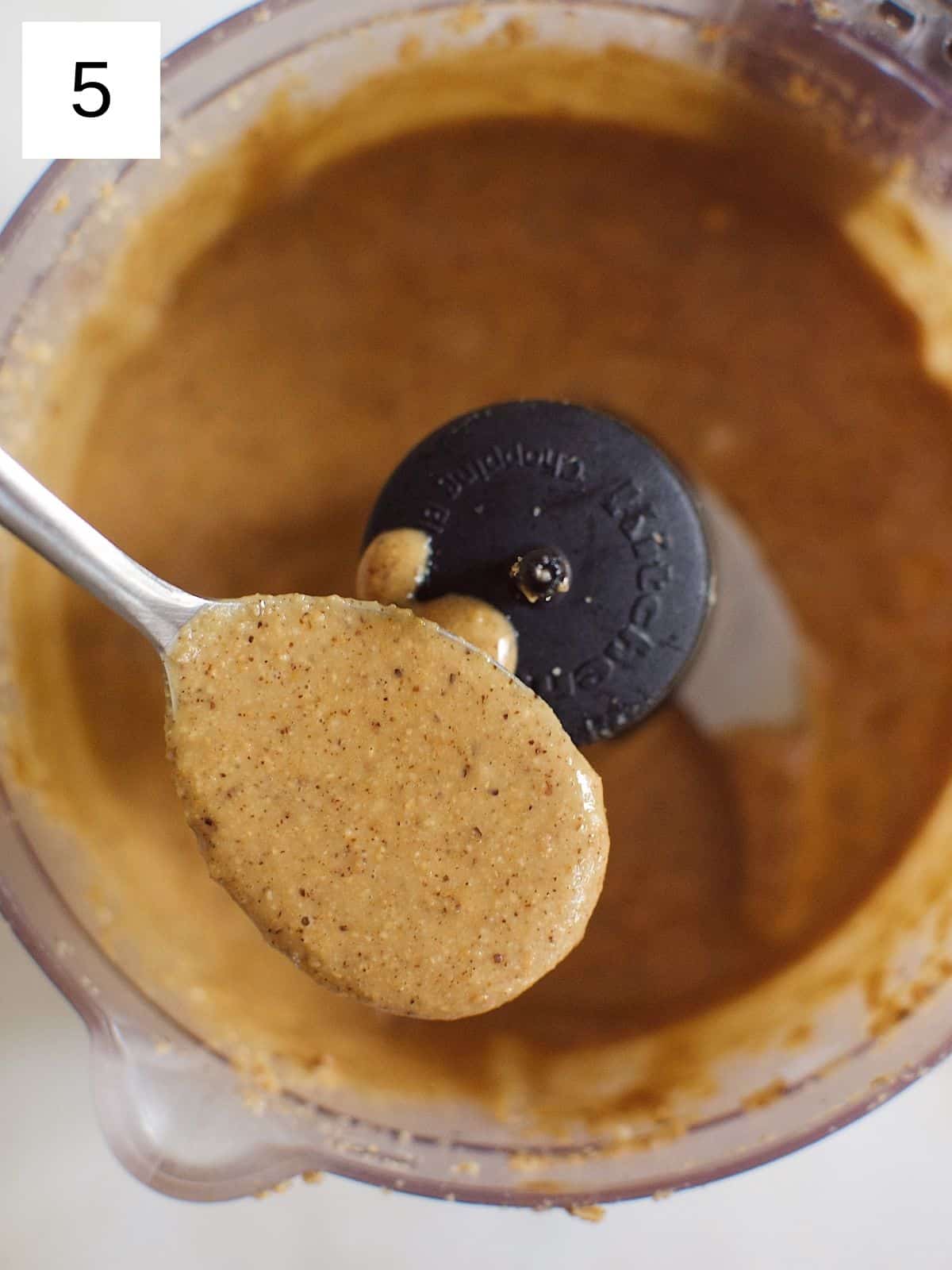
Step 3) Melt the Chocolate and Cocoa Butter. Then chop your chocolate into small pieces (image 6) and place it in a heatproof bowl, along with the cocoa butter (and coconut oil, if using; see recipe notes below) (image 7). Melt them together using a double boiler or by microwaving in short bursts, stirring frequently until smooth and evenly-melted.
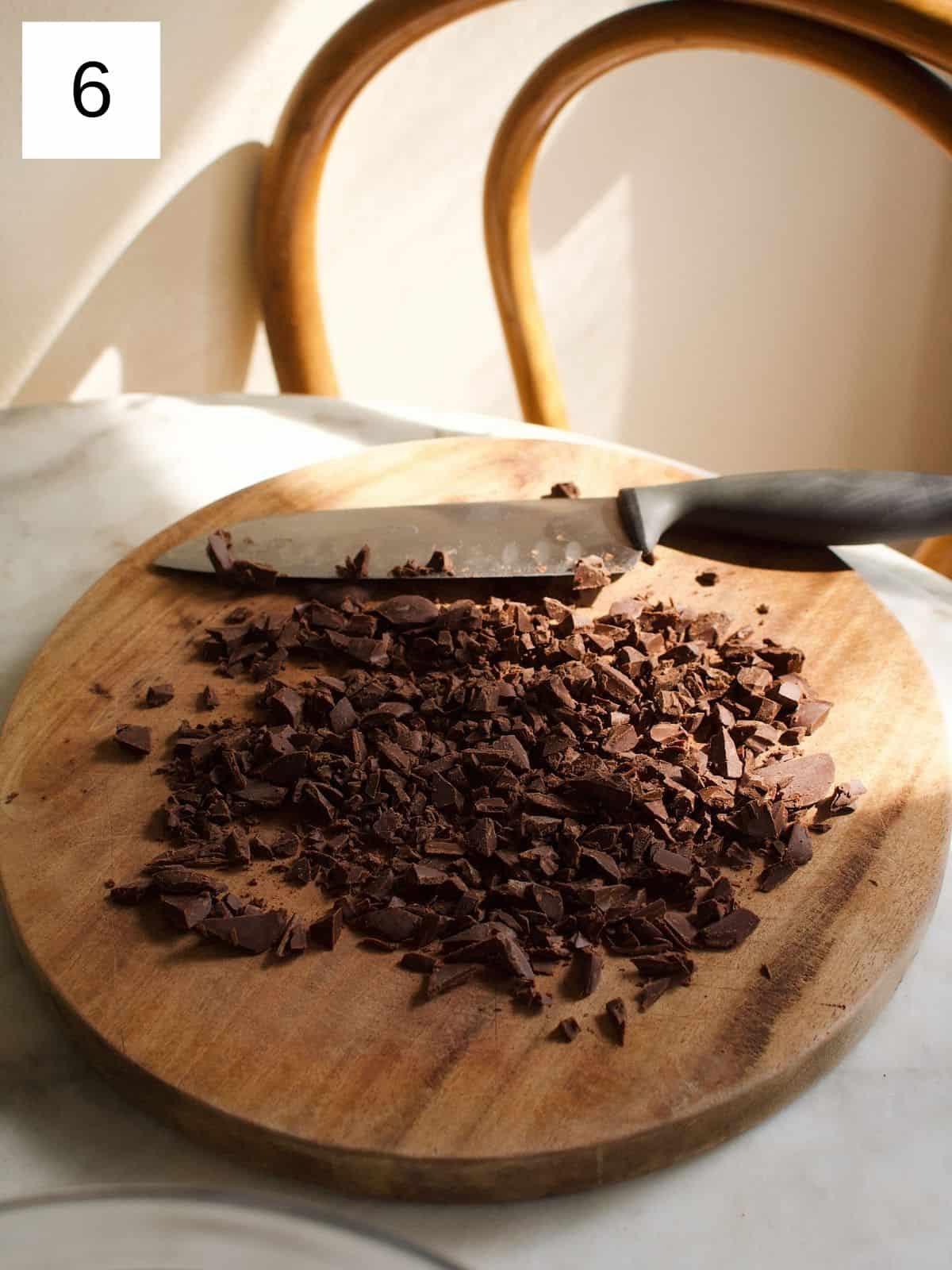
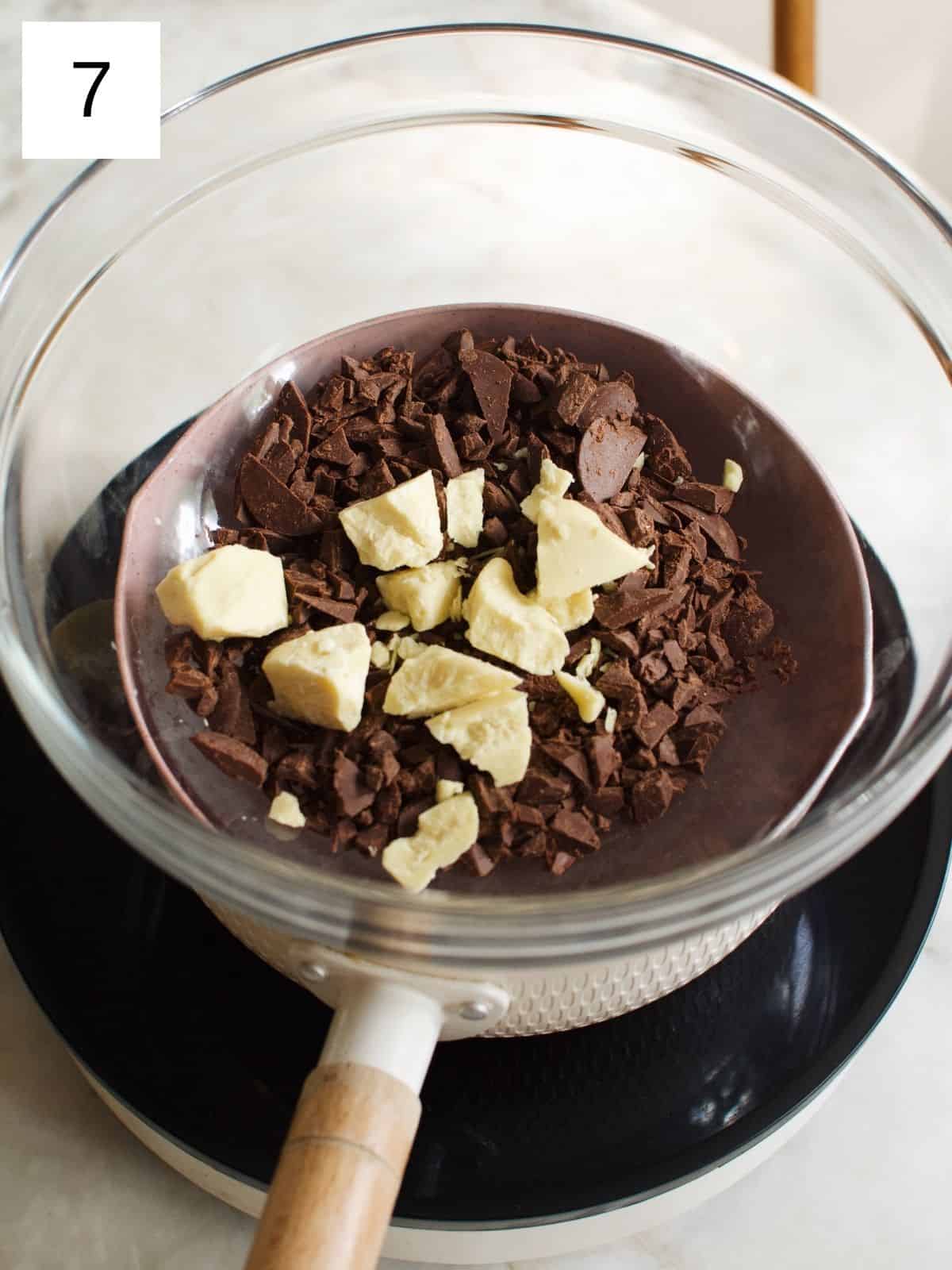
Step 4) Combine Chocolate and Hazelnut Paste. Once the chocolate and cocoa butter mixture is melted and combined, add the hazelnut paste to the bowl and mix thoroughly (images 8 & 9).
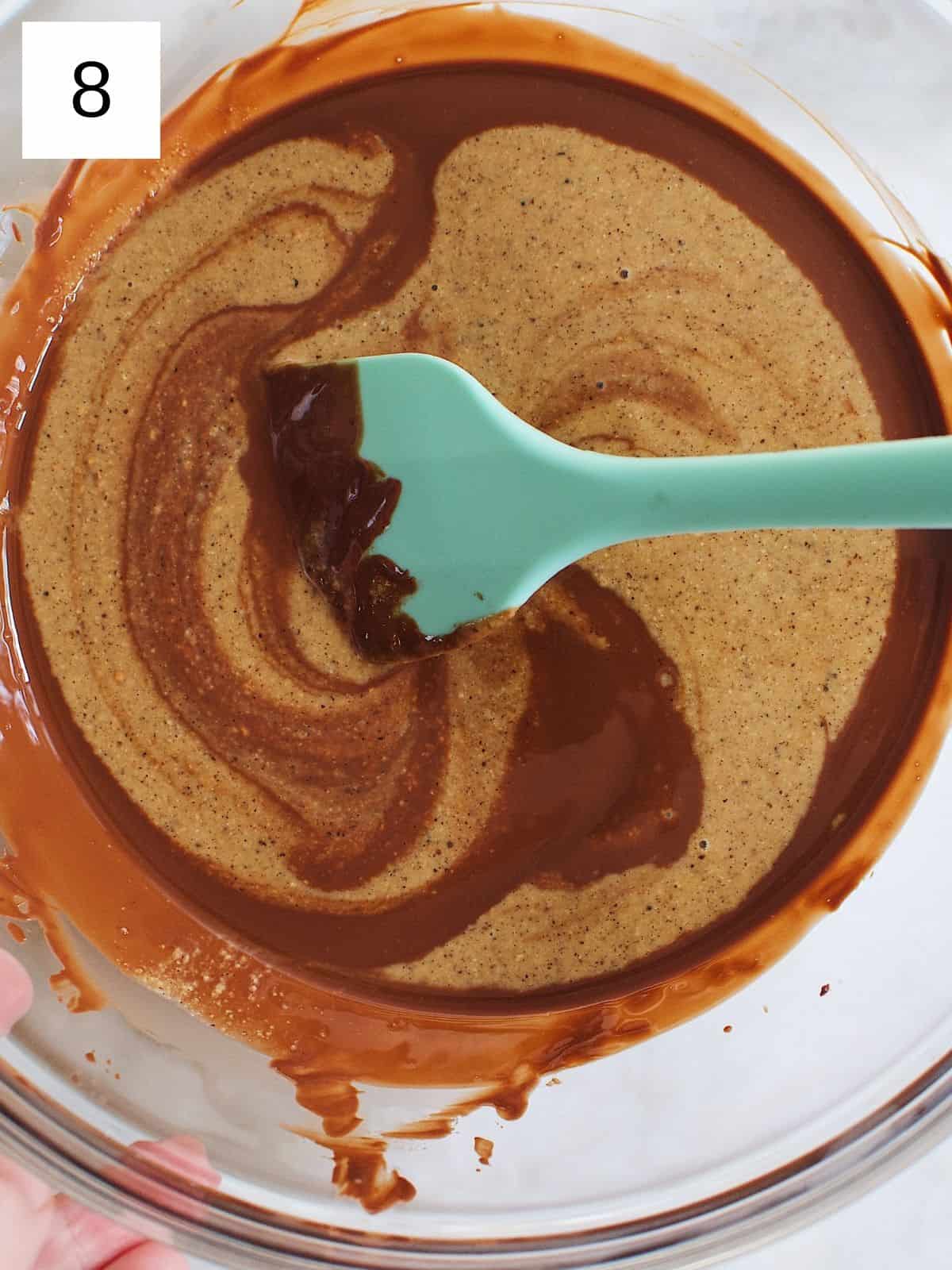

Step 5) Add Sugar and Flavorings. Sift your icing sugar to remove any lumps, then add it to the chocolate-hazelnut mixture (image 10). Add a pinch of sea salt if using, and stir until everything is well incorporated and smooth (image 11).
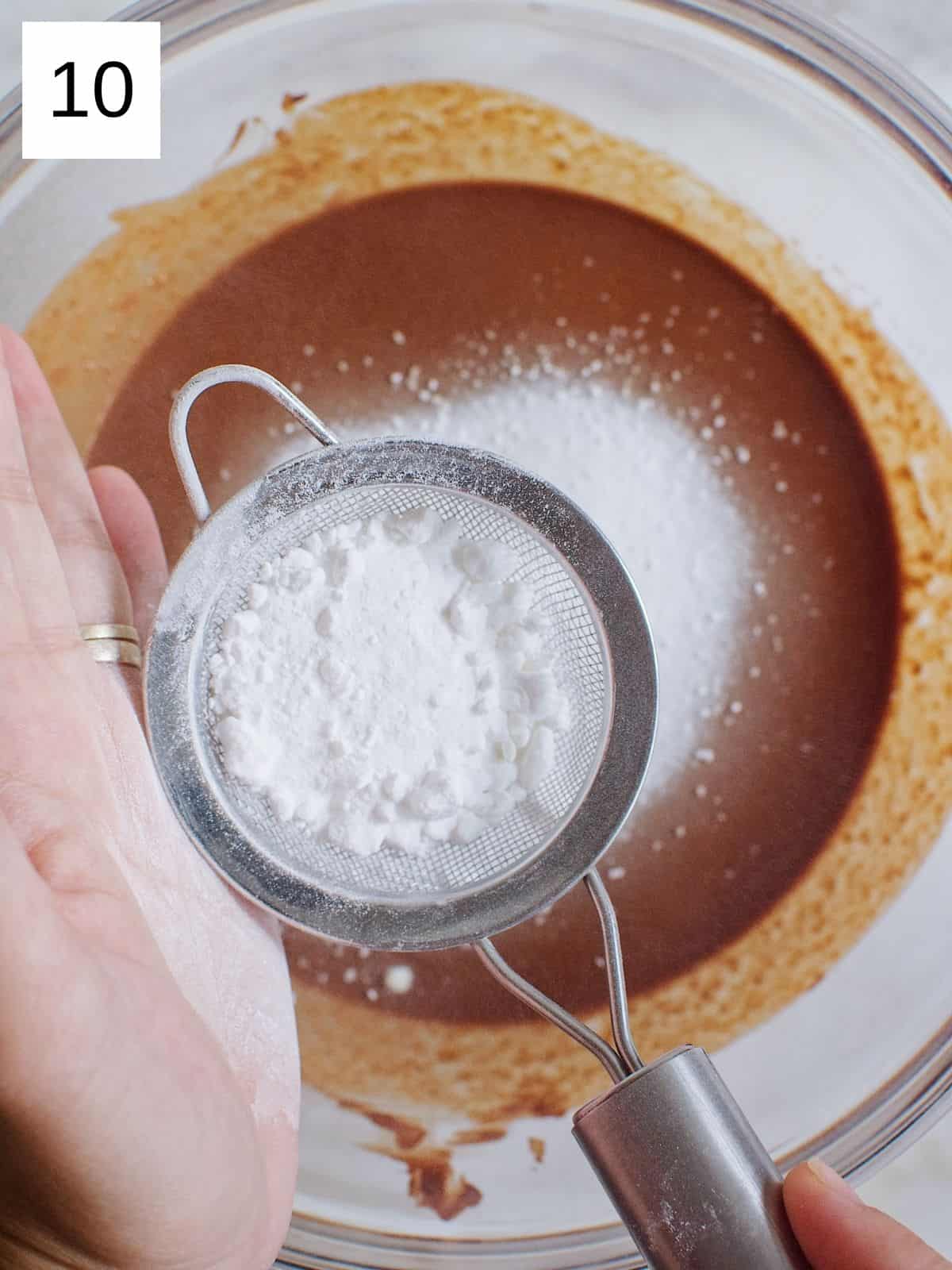
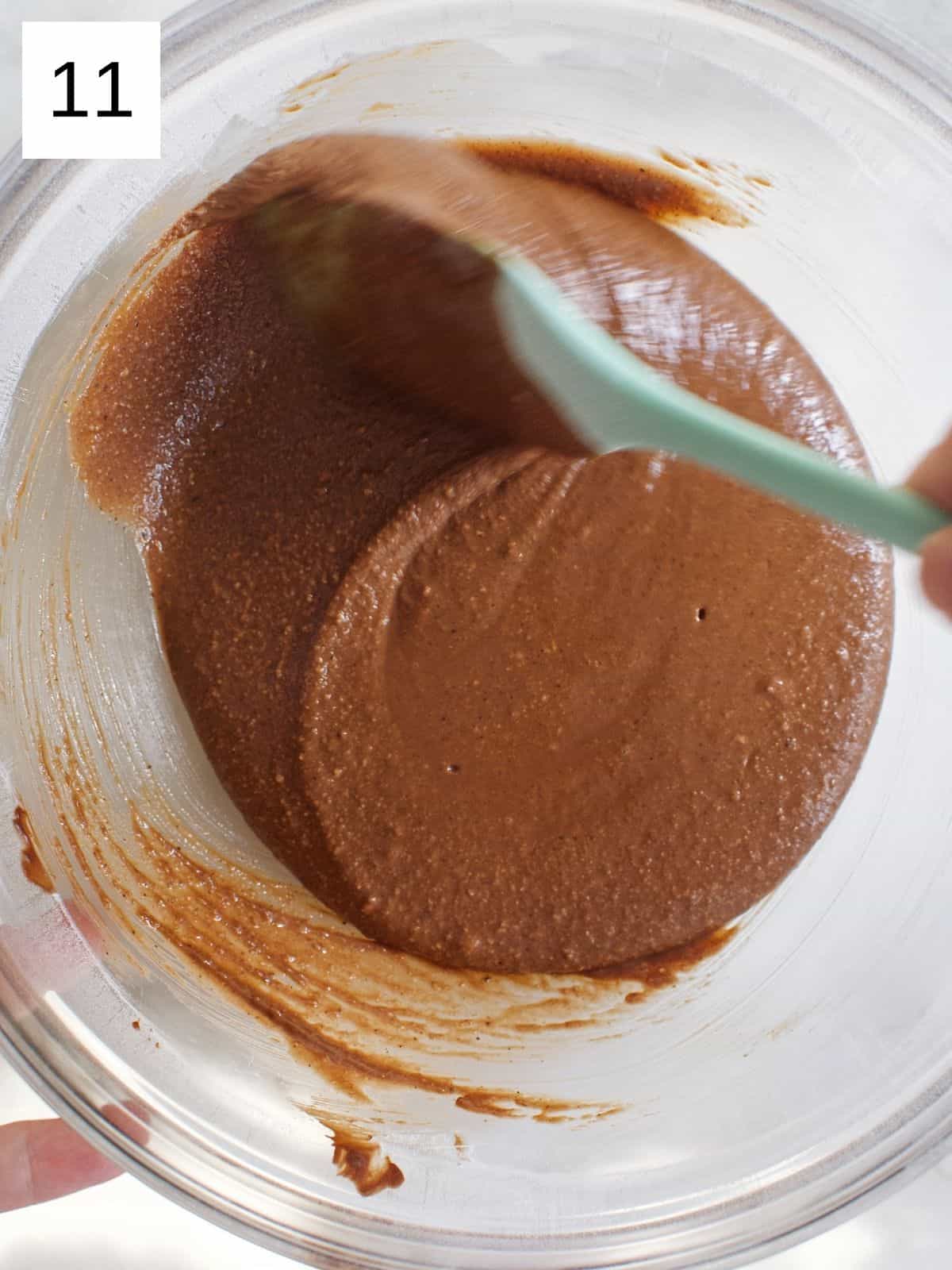
Step 6) Set the Gianduja. Pour everything into a jar if making a gianduja spread, or pour the mixture into a lined tray or mold and smooth the top with a spatula. Allow it to set at room temperature or in the refrigerator if you prefer a firmer consistency.
Once set, cut the gianduja into pieces or use cut-off chunks as a spread. It can be enjoyed on toast, as a filling for chocolates, or simply by the spoonful! Keep your homemade gianduja in an airtight container at room temperature for up to 2 months, or in the refrigerator for up to 6 months.
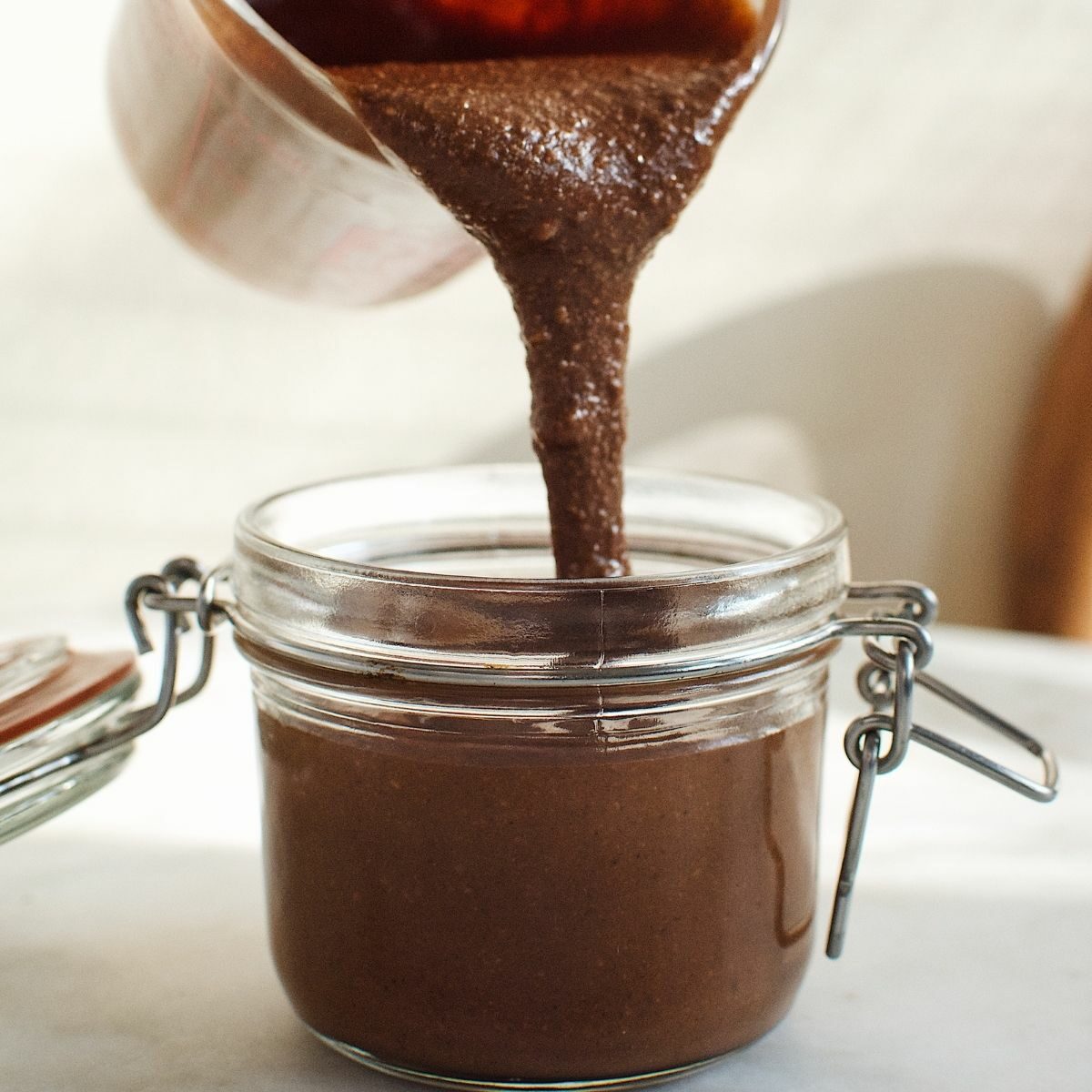
👨🏻🍳 Expert Notes and Tips
Measurements: There are no volume measurements here because it's imporant that you weigh out everything for the most accurate, balanced flavor profile.
Peeling Hazelnuts: If you encounter issues peeling the hazelnuts after roasting (I did), try to roast them some more in the oven (just make sure they don’t burn) before you attempt peeling them again.
Another method is to blanch the hazelnuts in a pot filled halfway with boiling water and 2-3 tablespoons of baking soda, blanching the nuts for about three minutes and then drain. The skin should come off no problem, and, once they’re dry, you can roast them further until they’re golden brown.
Tempering the Sweetness: Initially I used only 100g of icing sugar, which was sweet enough for me. I tried gradually adding the additional 50g first, and it was sweet enough for my husband, but any more and it would just turn into nutella.
So while you can use as little as 50g of sweetener to balance out the hazelnuts and chocolate, 100 to 150g of icing sugar is the sweet spot (pun not intended).
Spreadable Gianduja: For a more spreadable gianduja at room temperature, add 40g coconut oil to the melted chocolate and cocoa butter.
🔪 Ways to Use Gianduja
Gianduja spread, a creamy chocolate hazelnut dessert, has been traditionally used to enhance the flavor and texture of various baked goods. So beyond enjoying it straight from the jar, gianduja can be savored in a multitude of ways:
- Spread it on baguette slices, croissants, pancakes, or chocolate waffles with chopped hazelnuts and a sprinkle of sea salt
- Drizzle it over fruit as a filling for homemade crepes
- Use it as a dessert pizza topping, either with mascarpone and sliced fruit or with bruleed marshmallows
- Mix it with heavy cream to create a chocolate hazelnut ganache for truffles, bonbons, and pastries
- Incorporate it into cakes, mousses, crémeux, and gelatos for added flavor
- Melt it into ice cream bases for a nutty, chocolatey twist
- Make it the cake filling for a torta gianduiotto, a layered cake with sponge, hazelnut cream, and nuts
- Stuff it into cremini wafers, offering a crisp shell with a chocolate-hazelnut center
- Warm it to use as a dip for fruits like berries, mangoes, melons, and bananas
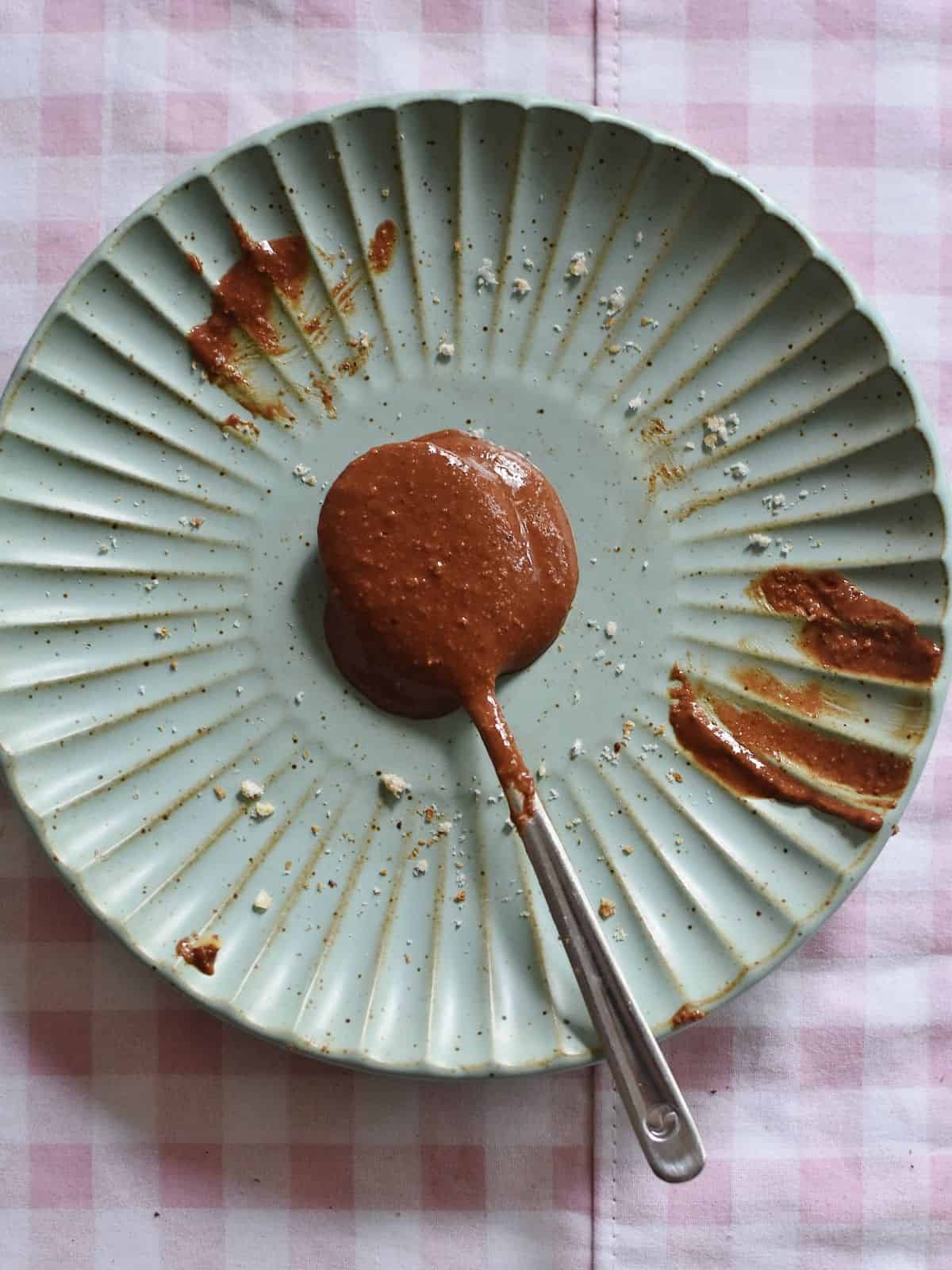
❓ How to Store Gianduja
The storing chocolate hazelnut spreads like gianduja for several months is to keep it in a cool, dry spot, away from direct sunlight and heat, and protect it from dampness and aromas. To maintain its texture and flavor, it can be stored at a cool temperature of 60-68°F (15-20°C) for up to 6 months.
If you live in a warm or humid climate, you'll want to keep gianduja in the refrigerator to keep it from melting or turning rancid, or freeze it for up to three months. Allow the gianduja to defrost at room temperature for several hours before using or enjoying it.
Keep any homemade gianduja in an airtight container at a slightly warmer room temperature for up to 2 months, or in the refrigerator for up to 6 months.
🙋🏻♂️ Frequently Asked Questions
A better alternative to Nutella would be a spread that has a higher nut and cocoa content and uses natural sweeteners, such as artisanal gianduja or homemade chocolate hazelnut spread, both of which prioritize quality ingredients and lower sugar content.
Gianduja is a type of Italian chocolate made from hazelnuts, cacao liquor, and sugar. The paste can also be shaped into bars or used as a filling in desserts like cakes and truffles when mixed with cream. Also, according to the European Union, there should be at least 20% hazelnuts and 32% cacao liquor for a product to be labeled as gianduja.
Gianduja is pronounced as "john-DOO-yah" in English, with a soft "j" sound at the beginning and emphasis on the second syllable.
Gianduja is prepared from three simple ingredients: hazelnuts, chocolate, and sugar. The hazelnuts add a nutty flavor and a creamy texture. In contrast, the chocolate and sugar provide sweetness and depth to the entire flavor. It also has a strong aroma that will entice your taste buds even before you take a bite.
Gianduja, also known as gianduia in Italy, is derived from the Piedmontese peasant character gianduja, who is fun-loving but cheeky, humble, and giving. Today, Gianduja is a popular ingredient in a range of Piedmontese desserts and pastries that are served during carnival season or year-round for locals and tourists alike.
Gianduja is not the same as praline; gianduja is a smooth blend of chocolate and about 20-55% hazelnut paste, while praline refers to a confection made from nuts and sugar syrup, which can vary in texture from creamy to crunchy and doesn't usually contain chocolate.
White gianduja is a variation of traditional gianduja that uses white chocolate instead of dark or milk chocolate, resulting in a sweeter and even creamier light-colored spread that still contains hazelnut paste.
📖 Recipe

Homemade Gianduja (Italian Chocolate Hazelnut Spread)
Equipment
- sifter
- food processor or high-powered blender
- oven or toaster oven
Ingredients
- 250g raw hazelnuts
- 100g high-quality dark chocolate alt. milk chocolate
- 30g cocoa butter
- 150g icing sugar can use as little as 50g
- pinch of sea salt optional
Instructions
- Begin by toasting your hazelnuts to enhance their flavor. Preheat your oven to 350°F (175°C) and spread the hazelnuts in a single layer on a baking sheet. Toast them in the oven for about 10-12 minutes, or until they're golden brown and fragrant. Once toasted, wrap the hazelnuts in a kitchen towel and rub them to remove as much of the skin as possible.
- When the peeled hazelnuts have cooled, transfer them to a food processor and grind them to a fine paste. This may take several minutes, and you should scrape down the sides of the food processor periodically to ensure an even consistency. You're aiming for a smooth, buttery texture, similar to that of smooth peanut butter.
- Then chop your chocolate into small pieces and place it in a heatproof bowl along with the cocoa butter (and coconut oil, if using; see notes below). Melt them together using a double boiler or by microwaving in short bursts, stirring frequently until smooth and evenly-melted.
- Once the chocolate and cocoa butter mixture is melted and combined, add the hazelnut paste to the bowl and mix thoroughly.
- Sift your icing sugar to remove any lumps, then add it to the chocolate-hazelnut mixture. Add a pinch of sea salt if using, and stir until everything is well incorporated and smooth.
- Pour the mixture into a lined tray or mold and smooth the top with a spatula, or pour it into a jar if making a gianduja spread. Allow it to set at room temperature or in the refrigerator if you prefer a firmer consistency.
- Once set, cut the gianduja into pieces or use cut off chunks to use as a spread. It can be enjoyed on toast, as a filling for chocolates, or simply by the spoonful!
- Keep your homemade gianduja in an airtight container at room temperature for up to 2 weeks, or in the refrigerator for up to a month. Keep your homemade gianduja in an airtight container at room temperature for up to 2 weeks, or in the refrigerator for up to a month.













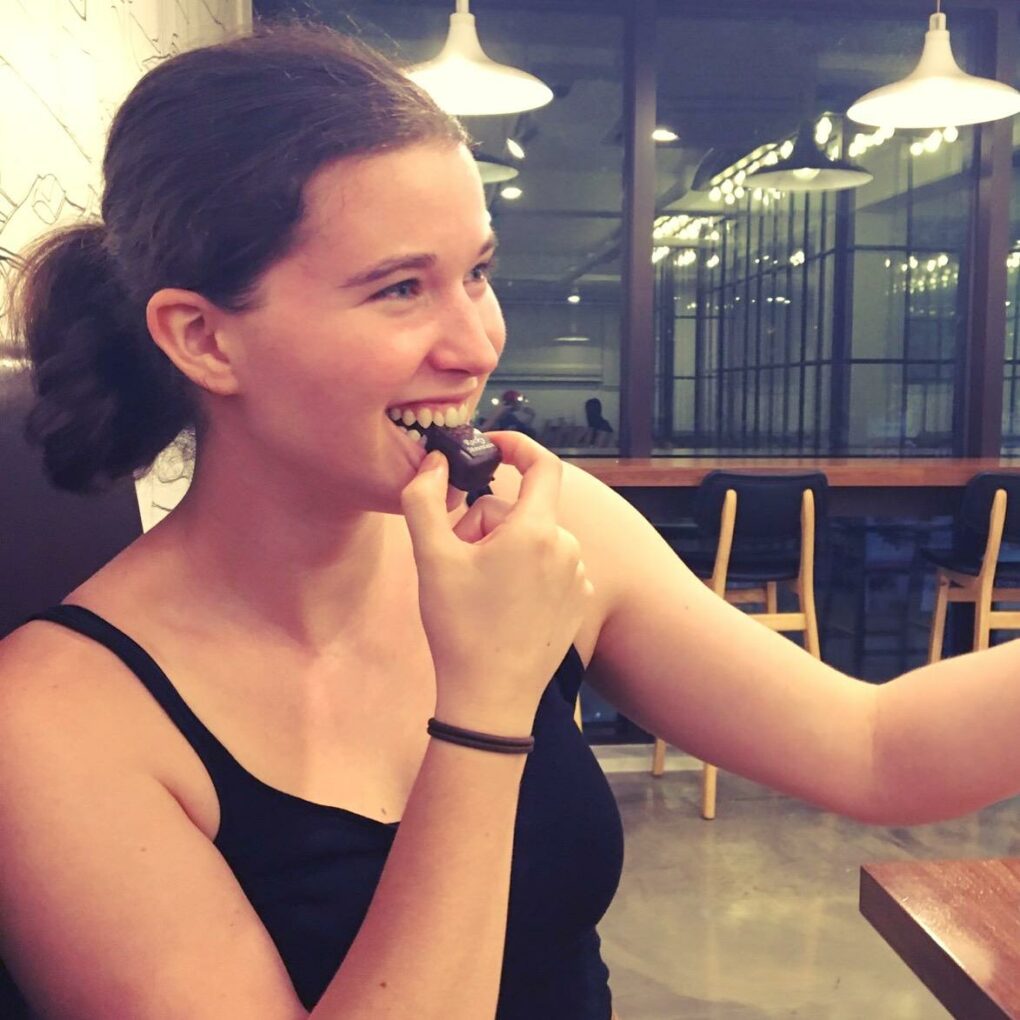




Comments
No Comments